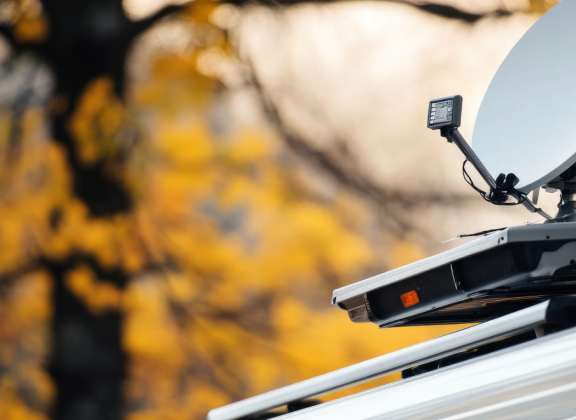Modern travel enthusiasts increasingly expect the same level of digital convenience on the road as they have at home. Motorhomes and caravans are no longer just vehicles; they’re mobile living spaces equipped with everything from solar power systems to full-featured kitchens. In this evolving environment, IPTV—delivered via internet protocols—is an essential upgrade for travelers who want access to live TV, streaming services, and on-demand media wherever they go. But bringing IPTV into a mobile setup comes with technical challenges, particularly regarding power management, internet connectivity, and safe, space-conscious installation. This guide addresses those challenges and offers practical insights into creating a reliable IPTV experience in your vehicle.
Powering IPTV Devices in a 12V Environment
One of the first hurdles to integrating IPTV in a motorhome or caravan is the difference in power standards. While most IPTV set-top boxes are designed for 110V or 230V AC household outlets, vehicles generally operate on a 12V DC power system. Adapting to this difference requires careful planning to ensure system compatibility and energy efficiency.
Using a pure sine wave inverter is the most common approach to convert 12V DC to 230V AC, making it possible to run standard IPTV hardware. However, this method introduces additional power conversion steps and can lead to energy loss. A more efficient alternative is selecting IPTV players that are natively compatible with 12V DC input, thereby reducing overhead and avoiding the complexity of voltage conversion. These 12V-compatible devices can be directly wired into the RV’s power grid, ideally through fused lines and regulated supplies for safety.
It’s important to ensure that all devices are securely connected and protected against voltage spikes or polarity reversal. Maintaining a clean and stable power supply not only prevents hardware failure but also supports smooth and uninterrupted playback—especially important when streaming over cellular networks.
Ensuring Stable Internet with LTE Routers
IPTV relies on a fast, stable internet connection to deliver high-quality video content. Public Wi-Fi networks, often found at campsites or gas stations, are typically unreliable, unsecured, and insufficient for consistent IPTV use. LTE routers designed for mobile applications offer a far superior alternative, enabling users to connect via 3G, 4G, or 5G networks as they travel.
A mobile LTE router with high-gain external antennas significantly boosts signal reception, even in areas with weak cellular coverage. These routers should support at least CAT6 LTE for adequate bandwidth, and ideally provide dual-band Wi-Fi alongside LAN ports for wired connections. A wired Ethernet connection between the router and IPTV box is highly recommended to reduce latency and prevent signal drops during high-bitrate streaming sessions.
Some LTE routers also feature automatic carrier selection or dual-SIM failover, providing redundancy when one network becomes unstable. Using data plans with large or unlimited allowances is advisable, especially for users planning to stream HD or 4K content regularly.
Mounting Equipment Safely in Confined Spaces
Space management in mobile environments is always a concern, particularly when dealing with sensitive electronic equipment. Unlike a static home setup, motorhomes and caravans face constant movement, vibration, and temperature changes. Securely installing IPTV and networking equipment is critical to ensure both operational safety and user convenience.
All devices should be mounted in a way that limits exposure to moisture, direct sunlight, and overheating. Popular strategies include fixing hardware under cabinets, behind ventilation panels, or within custom enclosures that allow air circulation. Mounts and brackets with anti-vibration features help extend equipment lifespan and reduce the risk of disconnections or component damage during transit.
Cable management is equally important. Routing cables through conduits or using adhesive clips can prevent tangling, chafing, or signal interference from nearby appliances. Shielded Ethernet cables and reinforced power leads are ideal for the demanding conditions inside a moving vehicle.
In addition, maintenance access should be considered during installation. Devices should be positioned so they can be easily removed or reset without disassembling furniture or cabinetry, especially in remote locations where technical support isn’t readily available.
Optimizing the IPTV User Experience
Hardware is only one side of the equation. The software interface, remote control usability, and compatibility with major IPTV services play a crucial role in the quality of the viewing experience. IPTV boxes that run on Android TV or Linux-based operating systems generally offer the most flexibility and update support. They often include built-in media center apps, app store access, and support for services like Netflix, YouTube, and IPTV playlist managers.
Offline viewing features, such as internal storage or USB-based file playback, are particularly useful when traveling through low-signal areas. The ability to preload content before a trip ensures that entertainment remains uninterrupted, even in data dead zones.
Smartphone companion apps can also enhance control and usability, offering keyboard input, screen mirroring, and remote diagnostics. Regular firmware updates and active developer support help keep the IPTV ecosystem functional and secure, even as streaming protocols and service APIs evolve.
Bringing IPTV into your motorhome or caravan is an achievable and rewarding investment, especially with the right blend of hardware and planning. Running devices efficiently on a 12V power supply, securing reliable mobile internet with LTE routers, and mounting components safely are essential steps toward building a seamless entertainment system for life on the move. With proper setup and reliable equipment, travelers can enjoy a home-like media experience no matter where the road takes them. IPTV isn’t just about watching TV on the go—it’s about enhancing the mobile lifestyle with comfort, choice, and connectivity.
